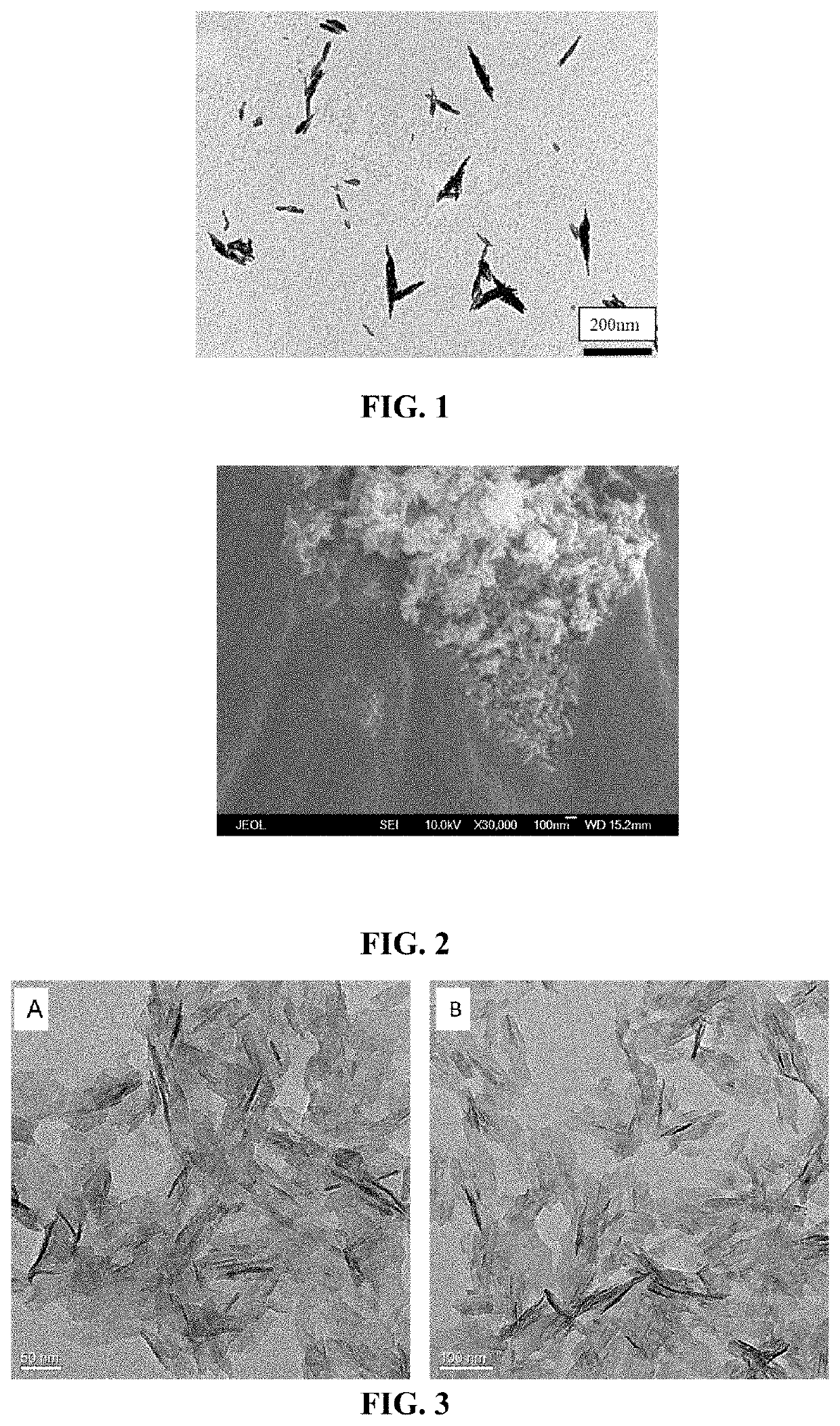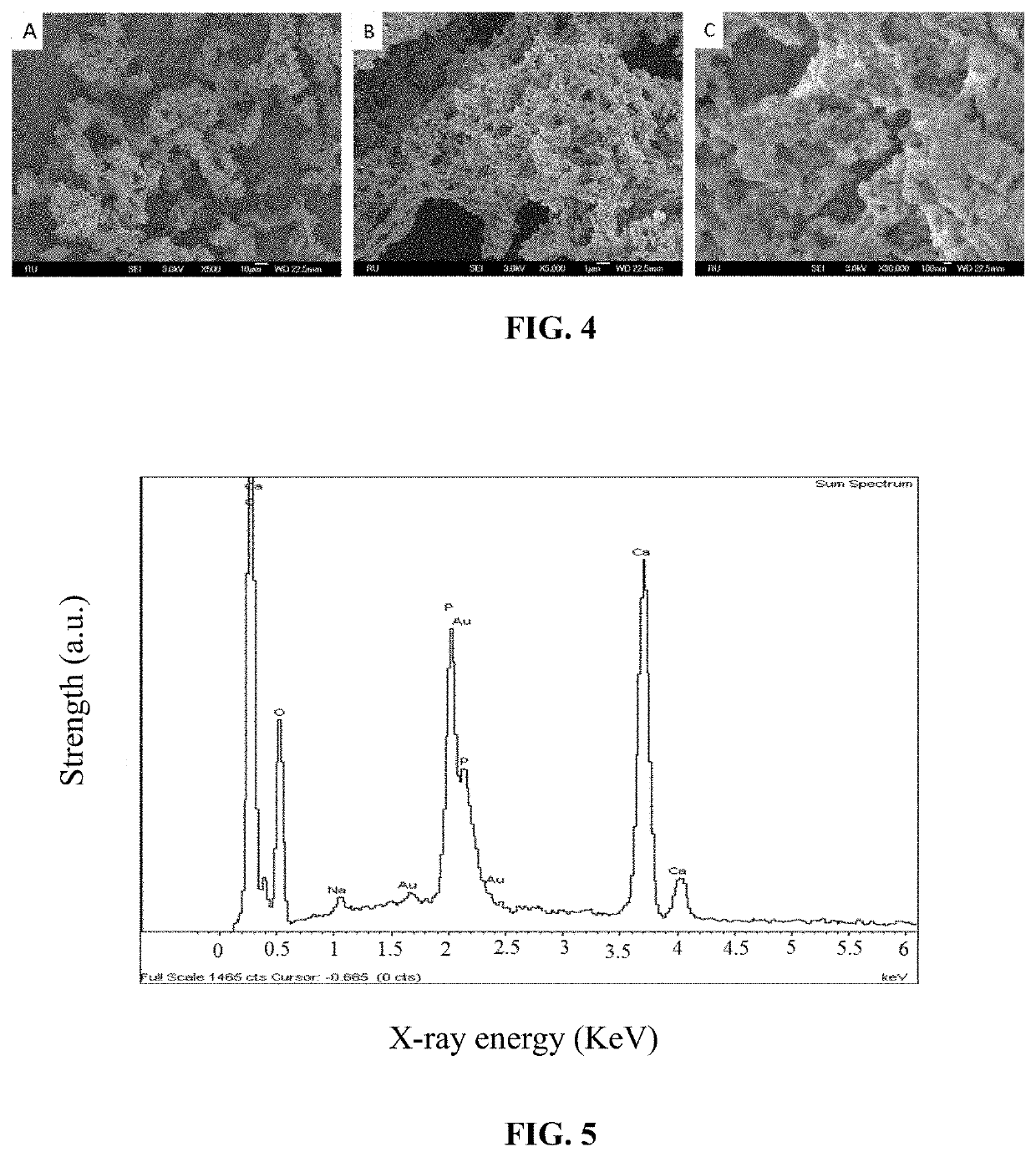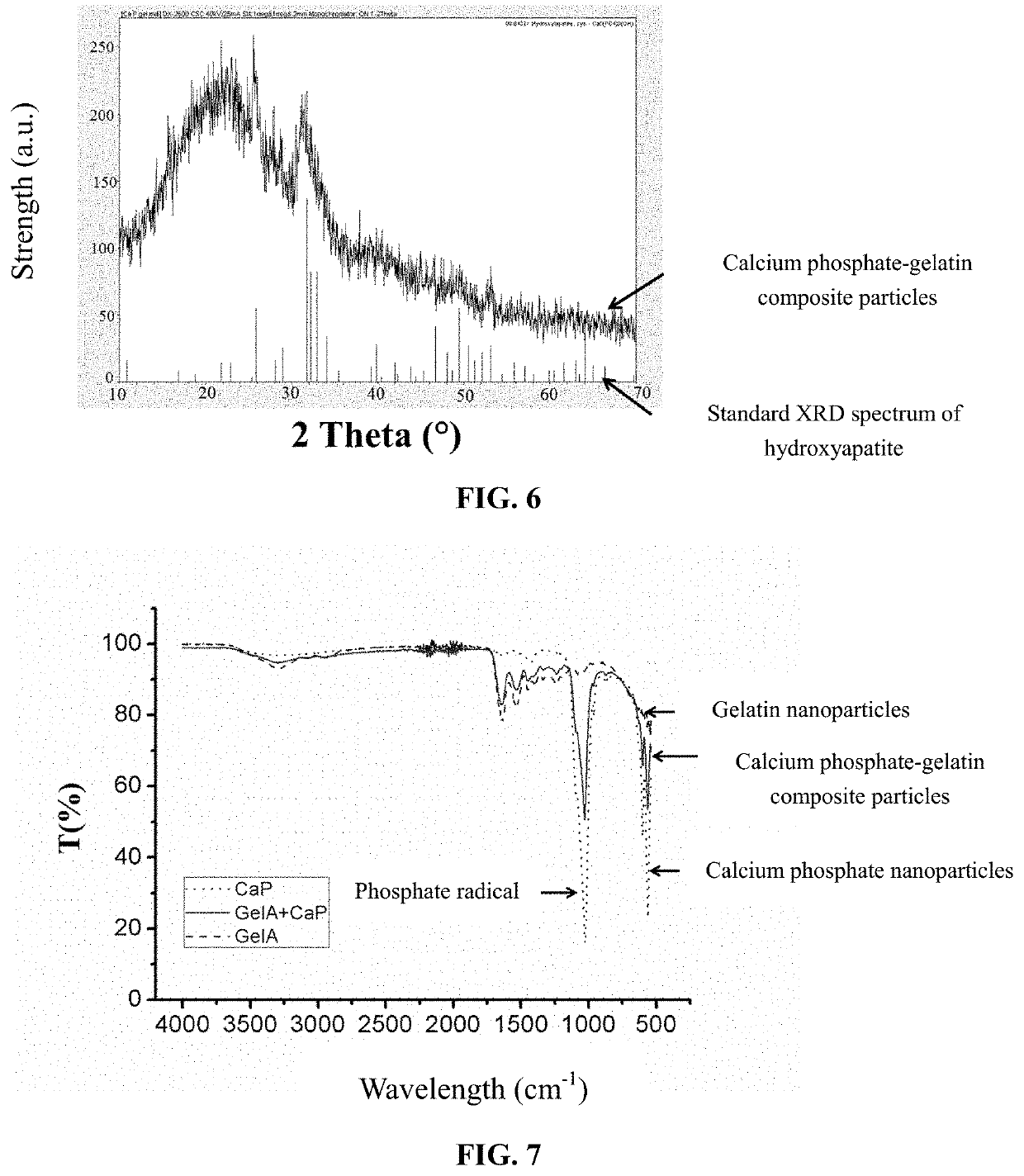Method for preparing inorganic nanoparticle-gelatin core-shell composite particles
- Summary
- Abstract
- Description
- Claims
- Application Information
AI Technical Summary
Benefits of technology
Problems solved by technology
Method used
Image
Examples
embodiment 1
[0072]The hydroxyapatite-gelatin core-shell composite nanoparticles are prepared according to the following steps:
[0073](1) dispersing hydroxyapatite nanoparticles prepared by hydrothermal synthesis in 25 mL of deionized water to get a suspension with a concentration of hydroxyapatite at 0.005 g / mL, heating the nanoparticles suspension to 40° C. and dissolving 1.25 g of gelatin in it and maintaining at 40° C. continuously, adjusting the pH of the suspension to 10 to get gelatin aqueous solution with dispersed hydroxyapatite nanoparticles, of which, the mixing ratio of hydroxyapatite to gelatin is 0.1:1 (w / w);
[0074](2) dropwise adding 75 mL of ethanol to the above gelatin aqueous solution with dispersed hydroxyapatite nanoparticles and stirring continuously (1000 rpm) to obtain a suspension of core-shell composite nanoparticles with hydroxyapatite nanoparticles as the core and gelatin as the shell;
[0075](3) adding 74 μL of 25% glutaraldehyde aqueous solution (cross-linking agent) to ...
embodiment 2
[0093]FIG. 11 is a TEM photograph of fluorescein-labeled silicon dioxide nanoparticles.
[0094]FIG. 12 is an SEM photograph of fluorescein-labeled silicon dioxide nanoparticles. It can be seen that the particle size of the silicon dioxide nanoparticles is 80 to 100 nm and particles are in spherical shape.
[0095]Silica-gelatin core-shell composite nanoparticles are prepared using the above fluorescein-labeled silicon dioxide nanoparticles according to the following steps:
[0096](1) dispersing fluorescein-labeled silicon dioxide nanoparticles in 25 mL of deionized water to get a suspension with a concentration of silicon dioxide at 0.01 g / mL, heating the nanoparticles suspension to 40° C., dissolving 1.25 g of gelatin in the nanoparticles suspension and maintaing at 40° C., adjusting the pH of the solution to 3 to get gelatin aqueous solution with dispersed silicon dioxide nanoparticles, of which, the mixing ratio of silicon dioxide to gelatin is 0.2:1 (w / w);
[0097](2) dropwise adding 75 m...
embodiment 3
[0104]We prepared silicon dioxide nanoparticle with particle diameter of 20 nm, 50 nm, 150 nm by the classic Stober method, silicon dioxide-gelatin core-shell composite nanoparticles are prepared according to the following method:
[0105](1) silicon dioxide nanoparticles of different sizes were dispersed in 25 mL of deionized water, and the sizes of silicon dioxide were 20 nm, 50 nm, and 150 nm, respectively, heating the nanoparticles suspensions to 40° C., and dissolving 1.25 g of gelatin in the nanoparticles suspensions and maintaining at 40° C. continuously, adjusting the pH of the suspensions to 3 to get gelatin aqueous solutions with different amounts of dispersed silicon dioxide nanoparticles, of which, the mixing ratio of silica to gelatin is 0.1:1 (w / w);
[0106](2) dropwise adding 75 mL of acetone to the above three groups of gelatin aqueous solutions dispersed with silicon dioxide nanoparticles, and keeping stirring continuously (1000 rpm) to obtain a homogeneous suspensions of...
PUM
| Property | Measurement | Unit |
|---|---|---|
| Temperature | aaaaa | aaaaa |
| Time | aaaaa | aaaaa |
| Time | aaaaa | aaaaa |
Abstract
Description
Claims
Application Information
 Login to View More
Login to View More - R&D
- Intellectual Property
- Life Sciences
- Materials
- Tech Scout
- Unparalleled Data Quality
- Higher Quality Content
- 60% Fewer Hallucinations
Browse by: Latest US Patents, China's latest patents, Technical Efficacy Thesaurus, Application Domain, Technology Topic, Popular Technical Reports.
© 2025 PatSnap. All rights reserved.Legal|Privacy policy|Modern Slavery Act Transparency Statement|Sitemap|About US| Contact US: help@patsnap.com



